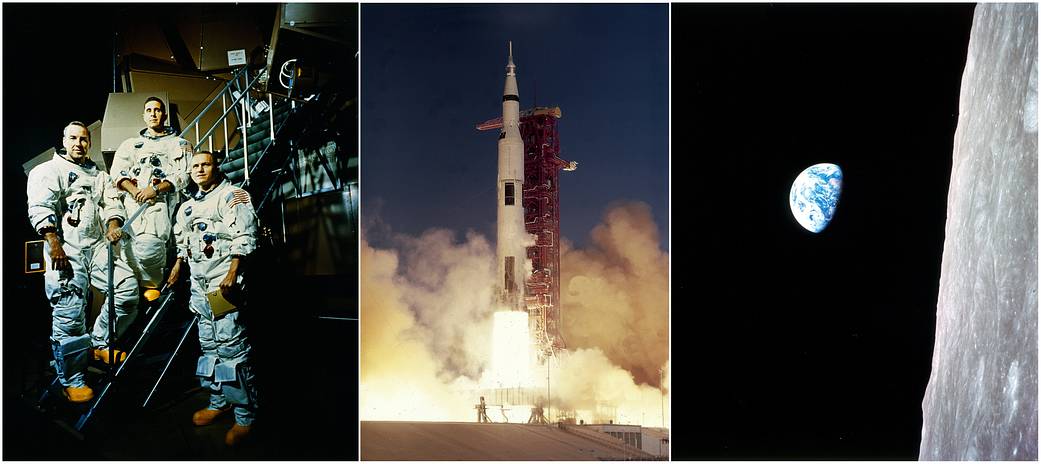
Apollo 8 tested not only the network tracking the spacecraft in the Earth’s orbit, but also in lunar orbit. The three astronauts left the Earth’s gravitation pull and entered into the Moon’s orbit. Communication with Apollo 8 became continuous because of the trajectory of the spacecraft to and from the moon was high enough above the Earth’s surface to allow it to be in continuous view of tracking stations. This was a significant change from previous low Earth orbiting missions where a single tracking pass was about 10 minutes or less followed by long periods without communications coverage until the next tracking station was in view. The three 26 meter equipped MSFN and Deep Space Network (DSN) stations were able to track Apollo 8 for 24 hours a day other than when the vehicle was orbiting and on the dark side of the moon out of view from the Earth. In a telecast on Christmas Eve, the astronauts showed the world the first images of the lunar surface while reciting lines from the Book of Genesis. NASA decided to install color television on Apollo 10 due to the successful broadcasts of the previous three missions.



























